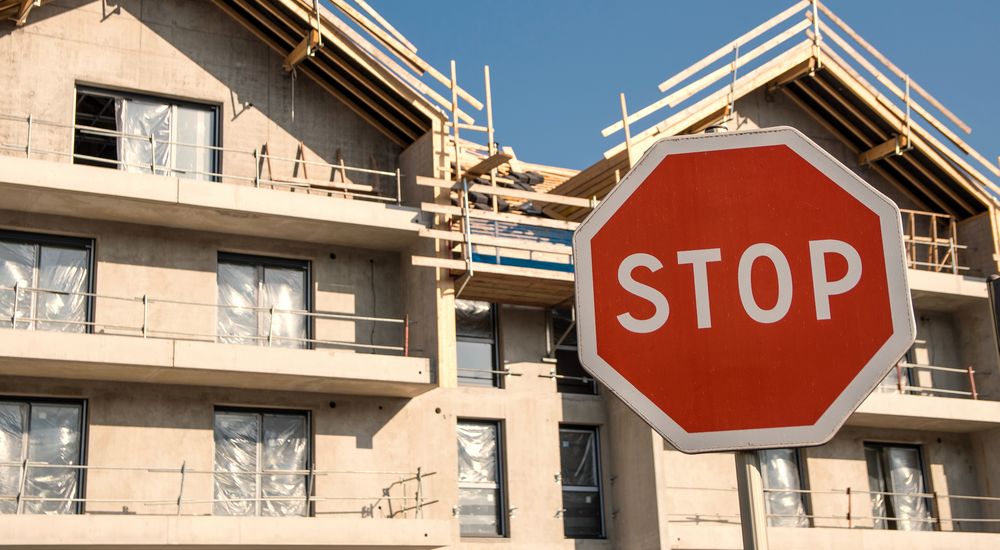Locally sourced natural stone can solve materials shortages
An unprecedented shortage of materials impacts many different sectors including construction, burials, roadways and town planning.

Due to Covid, the war in Ukraine and other unfortunate events such as the blockage of the Suez Canal, the lack of materials is often in the news as it impacts many different sectors including construction, burials, roadways and town planning. To find a little wiggle room, locally sourced products are becoming increasingly vital – a boon for natural stone.

An unprecedented shortage of materials
With Covid-19 and its global lockdowns and curfews, there is an unprecedented slowdown in quarrying and trading raw materials. When the Covid crisis was over, stocks sold out quickly, creating an alarming shortage and price hikes across the board.
Then the Suez Canal was blocked in 2021. Every day for six days, 50 ships and 10 billion dollars’ worth of goods were immobilized at both ends of the canal, 75% were containers from China (1).
In February 2022, before international trade even got back to normal, the war in Ukraine reinforced the materials supply crisis, adding to the energy crisis which considerably increased transport costs.
The construction sector is hard hit
In its note published in July 2022 (only in French), the CERC Auvergne-Rhone-Alps listed the main concerns of building firms confronted with this shortage of materials.
The biggest worry of the building sector relates to the difficulty of renegotiating prices for ongoing contracts, although that problem is now being addressed with the introduction of revision clauses in new contracts covering the difficulty of obtaining materials such as aggregates, BPE, aluminum, metal, timber, etc. and the fact that this situation leads to late deliveries of works in progress.
Another concern is the fall in public works sector invitations to tender, even if order books still provide short-term visibility. According to the UNICEM July 2022 newsletter (only in French), implemented public works volume fell by 8.6% and new orders by 4.8%.
Local stone can help to deal with the materials crisis
Supply relocation is the only way out of the shortage! Admittedly, natural stone cannot replace everything, but it does have significant benefits for construction as we have already discussed in our articles.
If granite from Brittany was strongly competed by Chinese granite, the problems outlined above definitely make it more competitive. Natural stone from China or India cannot be transported cheaply anymore and Spanish and Portuguese natural stone is facing demands from all over Europe. In the coating and pavement sectors, Moroccan and Turkish transport prices make their stone definitely less competitive. Once again, end-users are looking to Europe.
Why choose local natural stone for public works ?
All lights are green and quarry order books are full. But this does not take into account the unforeseeable future costs of energy which threaten this buoyancy.
Energy crisis remains the main threat for natural stone businesses
Bertrand Irribaren, SNROC Vice-President for Thin and Decorative Coatings and Director of Luget Quarry told us, “We had no idea that the energy crisis was going to be so severe. We installed photovoltaic panels, modified our production strategy and re-equipped with lower-powered machines. This year, we saved 15% on energy while increasing our output by 10%. But faced with a cost per megawatt currently multiplied by five, and we will have to renew our energy contract next year.”
Fears shared by Emeric de Kervenoaël, SNROC Vice-president for Large-Scale Construction Works and Director of Noyant Quarries. “In big works, locally sourced materials have been preferred for many years. The materials crisis exacerbated that choice in other sectors of our industry. Our main problem is power costs. The increase in the cost of electricity is huge, already up by 100% to 150% in 2022. Now everything depends on the next few weeks.”
To make the most of the trend towards relocalization accelerated by the materials crisis, the local natural stone sector must first and foremostly secure access to energy at reasonable costs. With UNICEM support, the sector is beginning to voice its concerns. To be continued…
(1) Forbes: Blocage du Canal de Suez : quelles conséquences sur le monde ?
© Photo credit: julien leiv / Adobe Stock




